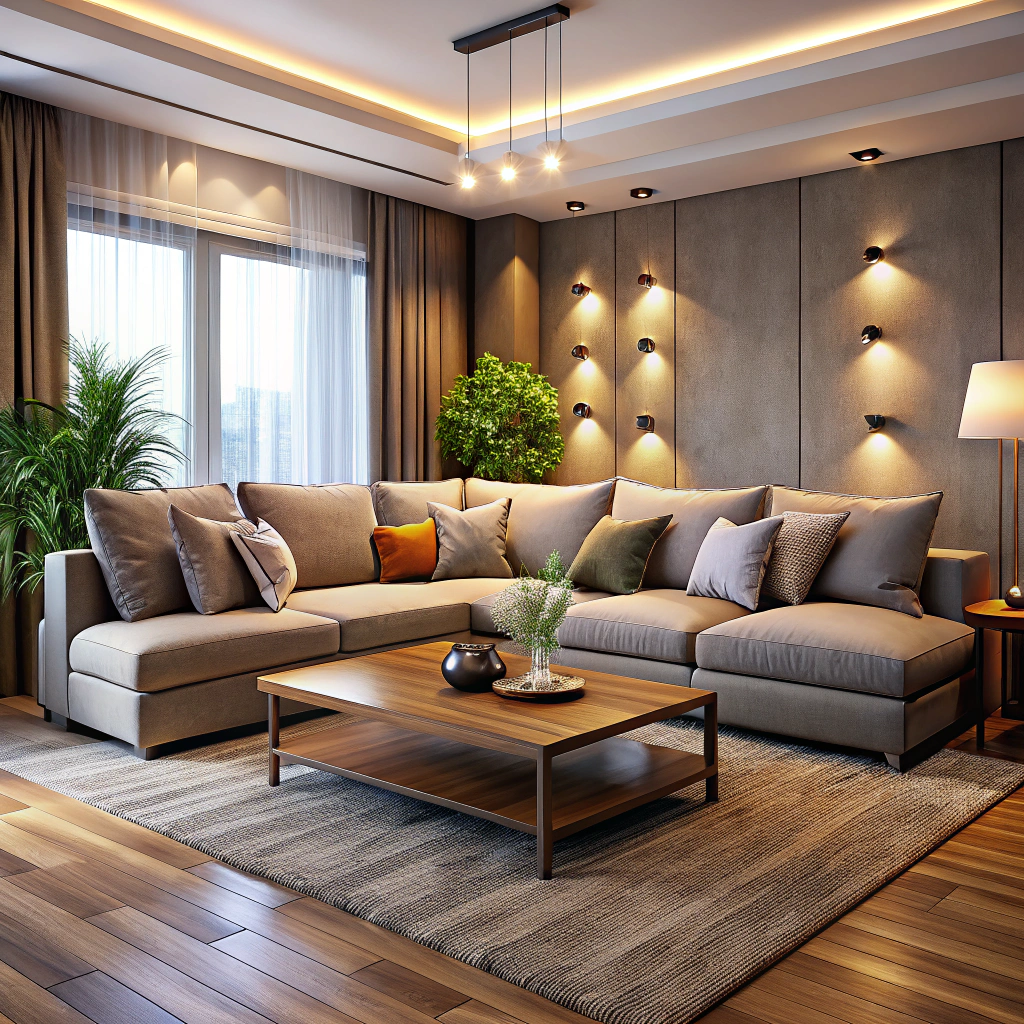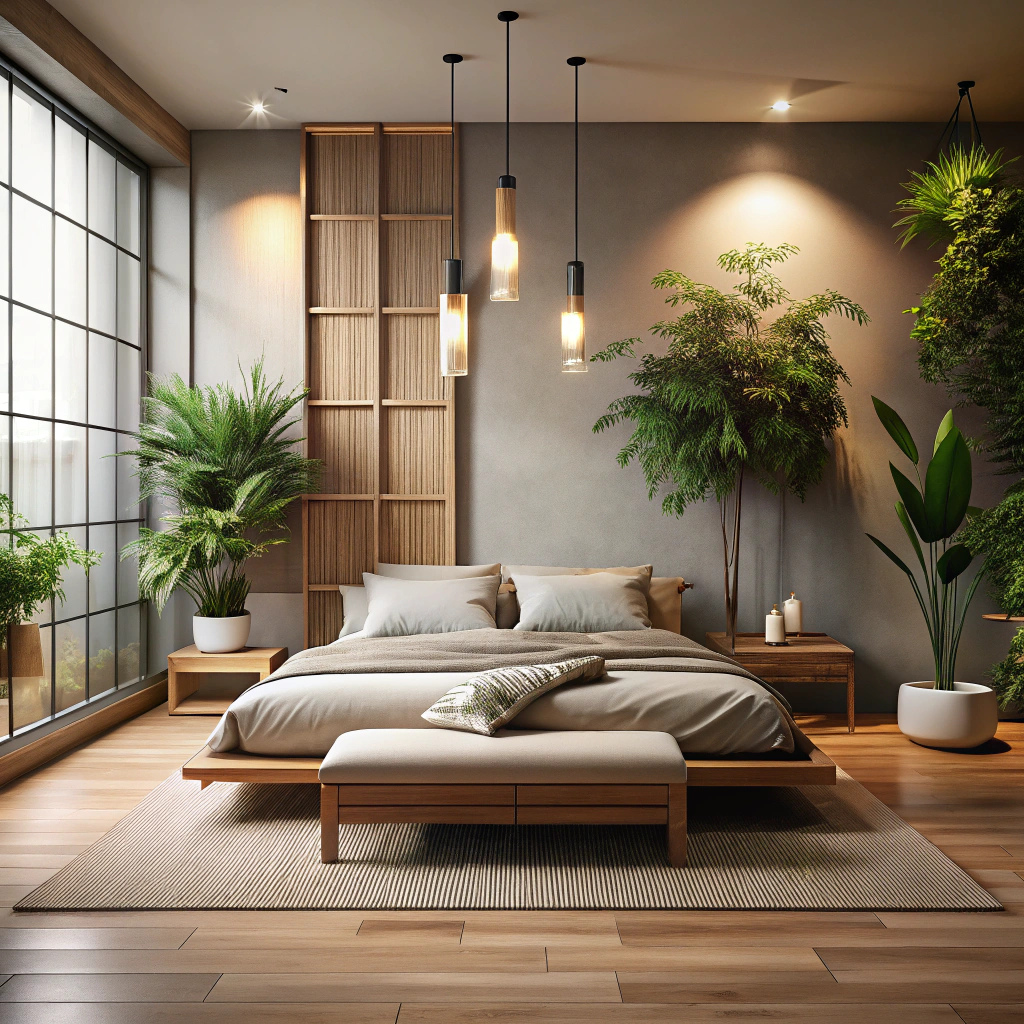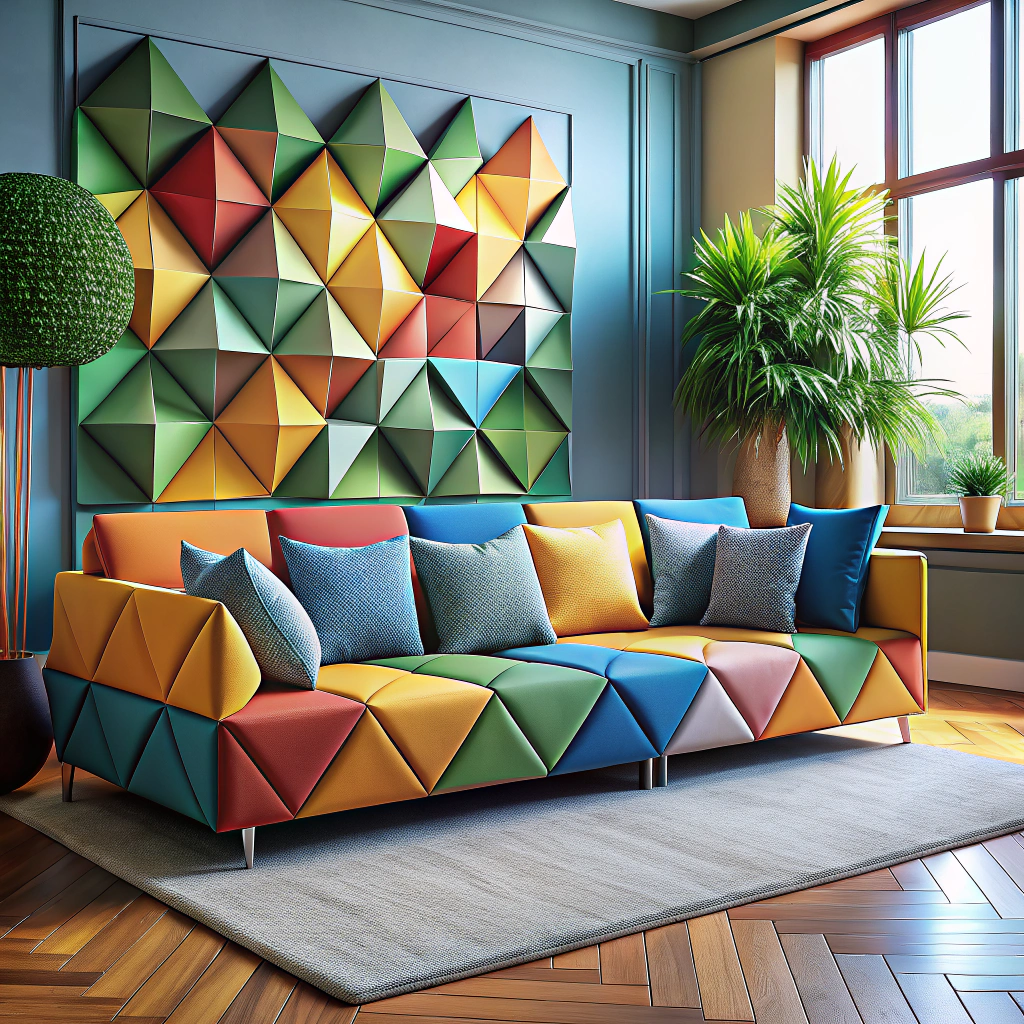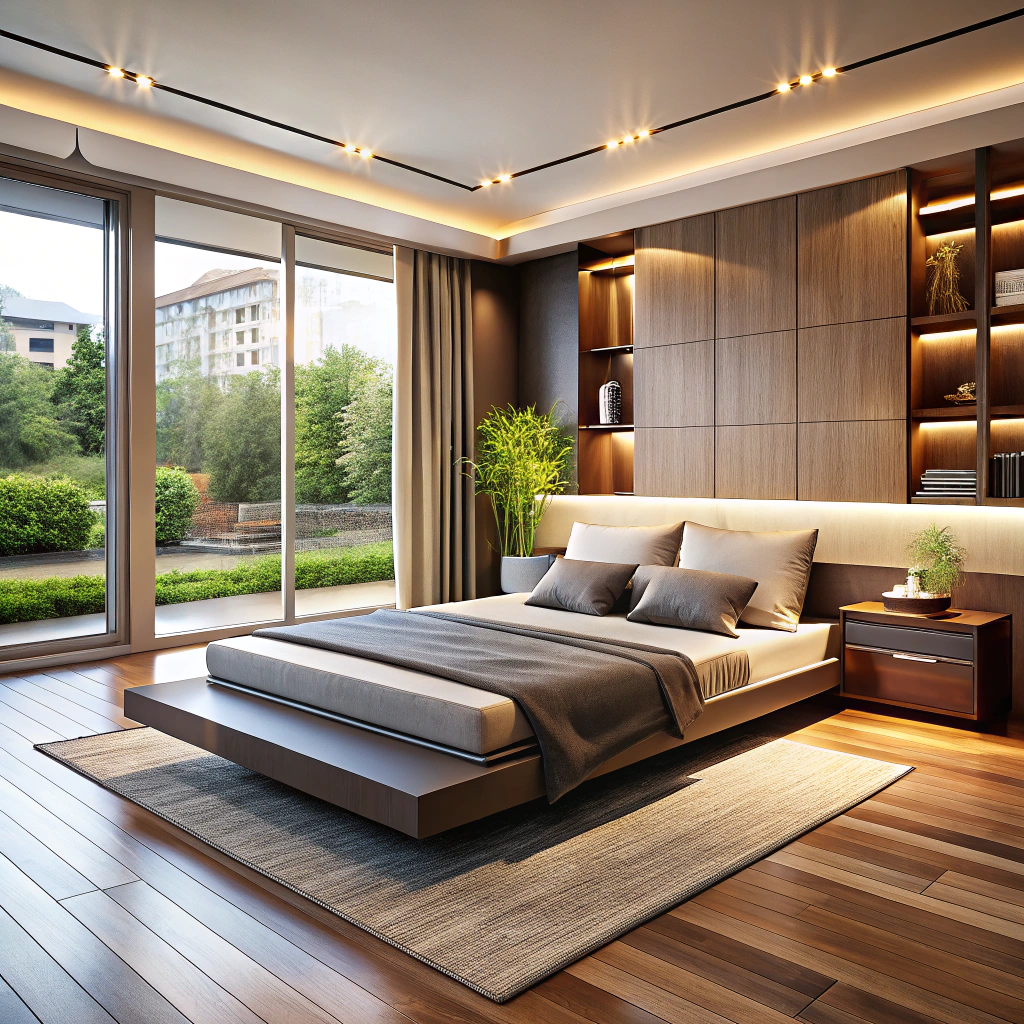Last updated on
Discover the ideal height to hang pictures above your couch, creating a stunning visual impact and enhancing the overall aesthetic of your living space.
Decorating your living room can be a fun and exciting experience, but it can also be overwhelming. With so many options to choose from, it’s easy to get lost in the sea of possibilities.
One of the most common questions that homeowners face when decorating their living rooms is how high above a couch to hang pictures. It may seem like a small detail, but getting the placement just right can make all the difference in creating an attractive and cohesive space.
In this article, we’ll explore some tips and tricks for hanging pictures above your couch that will help you achieve a beautiful and balanced look in your living room.
Key takeaways:
- Hang pictures at eye level (between 57-60 inches from the floor).
- Consider the height of your couch and throw pillows when determining the ideal height.
- Factors affecting picture height include couch size, ceiling height, and artwork size.
- Use appropriate hanging techniques and hardware for the weight of your artwork.
- Consider the style and color of your couch and room decor when selecting artwork.
Table of Contents
Determining Ideal Height

When it comes to hanging pictures above your couch, determining the ideal height is crucial. The goal is to create a visually appealing display that complements the rest of your living room decor.
A general rule of thumb for picture hanging is to position the center of the artwork at eye level, which typically falls between 57 and 60 inches from the floor. However, this can vary depending on factors such as ceiling height and furniture placement.
To determine an ideal height for hanging pictures above your couch, consider measuring up from either:
- The top edge or bottom edge of your sofa’s backrest
- The highest point on any throw pillows or cushions
Once you have determined where you want to hang your picture(s), use a tape measure and pencil to mark out where each piece will go before making any holes in walls.
Rule of Thumb for Picture Hanging
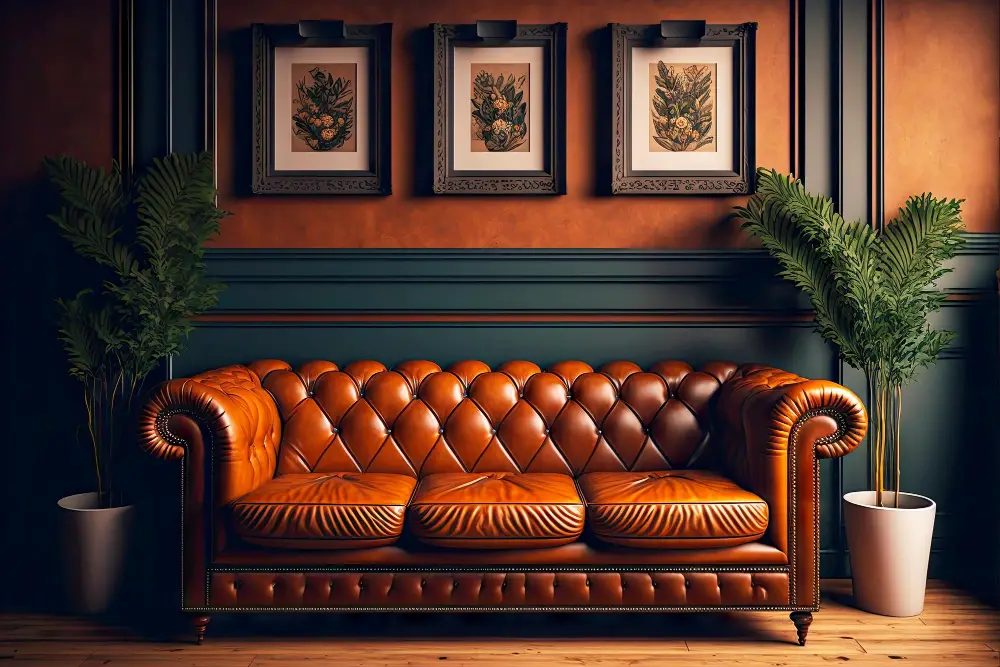
One such rule is to hang the picture at eye level, which typically means positioning the center of the artwork about 57-60 inches from the floor. This height is based on average human eye level and ensures that viewers can comfortably view and appreciate your artwork without straining their necks.
However, keep in mind that this rule may not always apply depending on factors such as ceiling height or furniture placement. For example, if you have high ceilings or a particularly tall sofa, you may need to adjust accordingly by hanging your pictures slightly higher than eye level.
The Eye-level Rule Explained

The idea behind this rule is to hang your artwork at a height where the center of the picture aligns with the average person’s eye level. This creates an aesthetically pleasing display and makes it easy for viewers to appreciate your art without straining their necks.
However, there are some factors you should consider when applying this rule in practice. For example, if you have high ceilings or tall furniture like bookcases or armoires near your couch, you may need to adjust accordingly so that your pictures don’t get lost in space.
Keep in mind that “eye-level” can vary depending on who will be viewing the artwork most frequently. If you’re hanging pictures above a sectional sofa where people will be seated rather than standing up straight while looking at them (such as over an entryway), then consider lowering them slightly below standard eye level for optimal viewing comfort.
Factors Affecting Picture Height

One of the most important considerations is the size and style of your couch. If you have a low-profile sofa or sectional, you may want to hang your pictures slightly higher than if you have a high-back or bulky piece of furniture.
Another factor to consider is the height of your ceiling. If you have tall ceilings, hanging pictures too low can make them feel disconnected from the rest of the room and create an awkward visual effect.
On the other hand, if you have lower ceilings, hanging pictures too high can make them seem out-of-place and unbalanced.
The type and size of artwork also play a role in determining picture height above furniture. Large pieces should be hung at eye level while smaller ones could be grouped together for maximum impact on larger walls.
Finally yet importantly lighting conditions must also be taken into account when deciding where to place art over sofas as glare from windows or light fixtures could detract from their beauty.
Wall Space Considerations
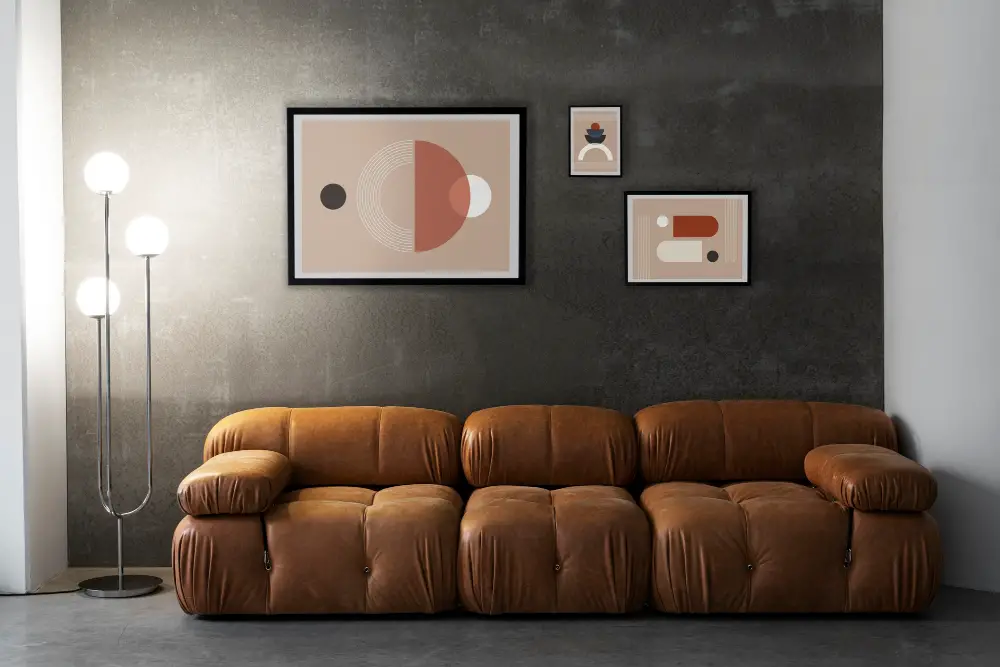
Before you start hammering nails into your walls, take a moment to assess how much room you have and what kind of layout will work best for your living space.
If you have a large blank wall behind your couch, this provides an excellent opportunity for creating a gallery-style display with multiple frames arranged in different sizes and shapes. On the other hand, if there isn’t much room between the top of your sofa and ceiling or crown molding, then hanging just one larger piece may be more appropriate.
Another consideration is any architectural features that may affect where you can hang pictures. For example, if there’s wainscoting on the lower half of your walls or built-in shelving units flanking either side of where you want to hang art pieces above a sectional sofa – these elements should be taken into account when deciding on placement options.
Frame Sizes and Arrangements
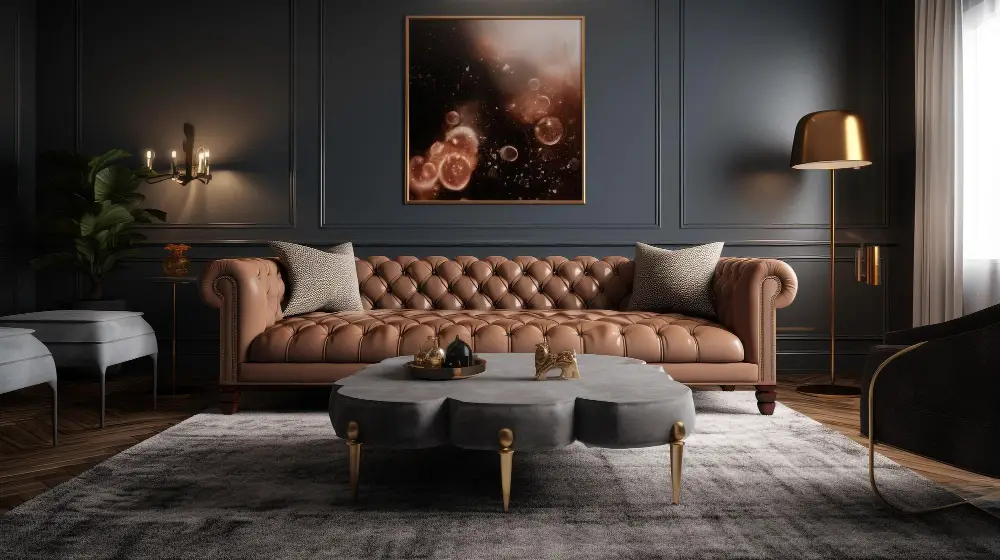
Choosing the right frame sizes and arrangements is crucial for creating a balanced display that complements your furniture, decor, and personal style.
One popular approach is to use larger frames with bold artwork or photographs as focal points above the couch. This creates an eye-catching display that draws attention to these pieces while also providing visual interest throughout the rest of the room.
Another option is to create a gallery wall using smaller frames arranged in clusters or grids. This allows you to showcase multiple pieces at once while still maintaining balance and harmony within your space.
No matter what approach you choose, be sure to consider factors such as color scheme, texture, shape, and proportion when selecting frame sizes and arranging them on your wall.
Picture Hanging Techniques
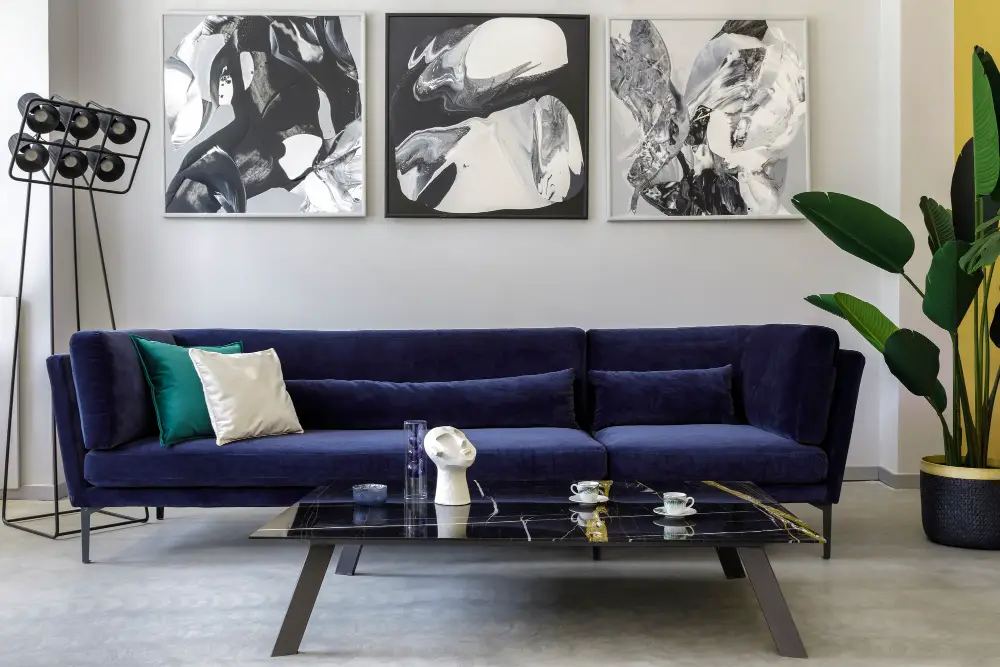
There are several ways to hang pictures, including using nails or screws, adhesive strips or hooks, and wire systems. The choice of technique will depend on various factors such as wall material and weight of the frame.
For small frames with lightweight materials like plastic or cardboard backing boards that weigh less than 5 pounds each; adhesive strips work well. They are easy to use and do not require any tools for installation.
For larger frames weighing more than 5 pounds each; nails or screws may be necessary depending on your wall type (drywall vs plaster). You can also use a wire system where two D-rings attached at either end of a wire run across the backside of your frame allowing you to adjust its position easily.
When using nails/screws/wire systems ensure they’re levelled correctly before hammering them in place so that they don’t damage walls by leaving unsightly holes behind when removed later down-the-line.
Couch Styles and Room Decor

For example, if you have a modern or minimalist-style sofa, you may want to opt for simple and sleek frames that complement its clean lines. On the other hand, if you have a more traditional or ornate sofa with intricate details and patterns, consider choosing frames that are equally detailed.
Think about how the colors in your artwork will interact with those in your furniture and decor. If you have neutral-colored walls but bold-colored furniture pieces like an accent chair or rug – choose artwork that complements these colors without clashing.
Hanging Diptychs and Triptychs
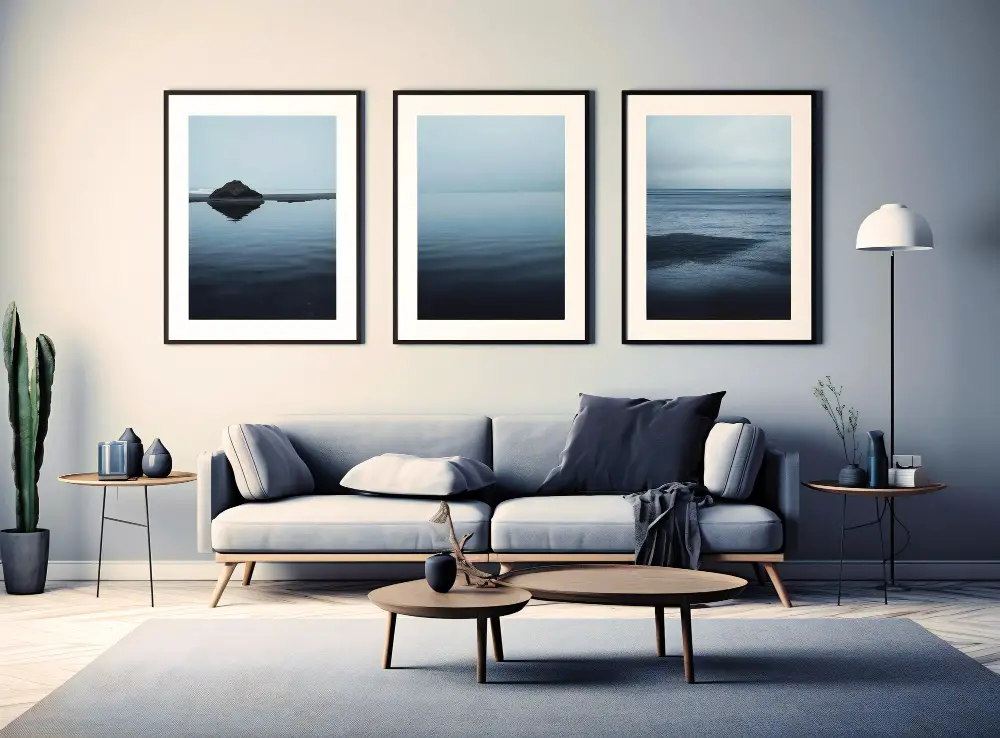
These multi-panel artworks are designed to be displayed together, with each panel contributing its own distinct element to the overall composition.
To hang diptychs or triptychs above your couch, start by determining the ideal height for the center of the artwork using one of the methods outlined earlier in this article. Then, measure out equal distances on either side of that center point for each panel in your artwork.
If you’re working with an odd number of panels (such as a triptych), place the largest panel in the center and arrange smaller panels around it at equal distances. For example, if you have three panels that are 12 inches wide each, space them out so that there is 12 inches between each one.
When hanging multiple pieces together like this, it’s important to ensure they are level both horizontally and vertically. Use a level tool or measuring tape as needed during installation.
Lighting Considerations
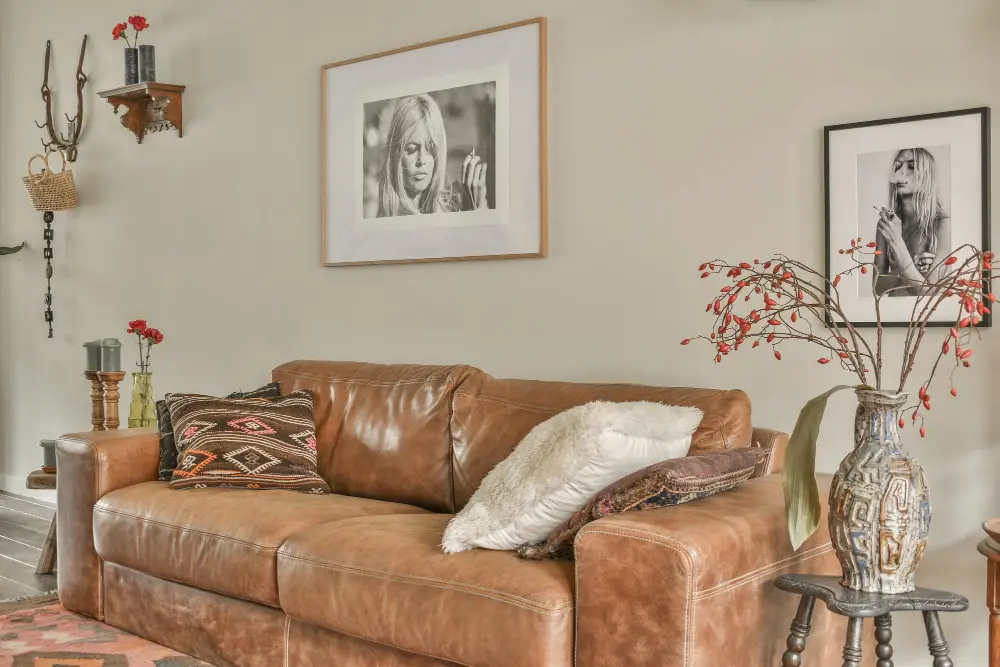
When hanging pictures above your couch, you need to consider the lighting conditions in your living room. If there’s too much glare or reflection on the frames, it can detract from their visual impact and make them difficult to see.
To avoid this problem, position your pictures so that they’re not directly facing windows or other sources of bright light. You can also use curtains or blinds to control the amount of natural light entering your living room.
Another option is to install accent lighting above or below each picture frame. This will help illuminate them and create a warm ambiance in your living space while drawing attention to their unique features.
When choosing accent lights for picture hanging purposes, opt for fixtures with adjustable brightness levels so that you can customize the intensity according to different times of day and moods.
Matching Frame Designs
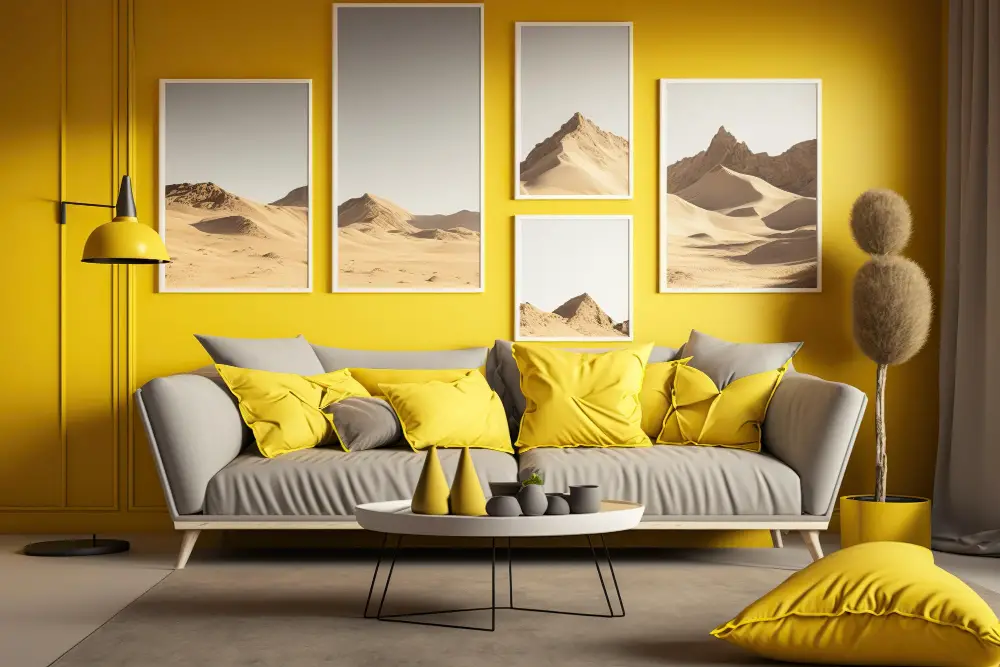
The frames you choose should complement both your artwork and your room’s decor. If you have a modern or minimalist living room, consider sleek and simple frames with clean lines that won’t overpower the artwork or clash with other elements in the space.
On the other hand, if you have a more traditional living room with ornate furniture and accessories, opt for frames that are more decorative and intricate to match this style. You can also mix different frame styles together for an eclectic look.
Another option is to use matching frames throughout your gallery wall display above your couch. This creates a cohesive look that ties all of the pieces together while still allowing each individual piece of art to shine on its own.
Safe and Secure Hanging
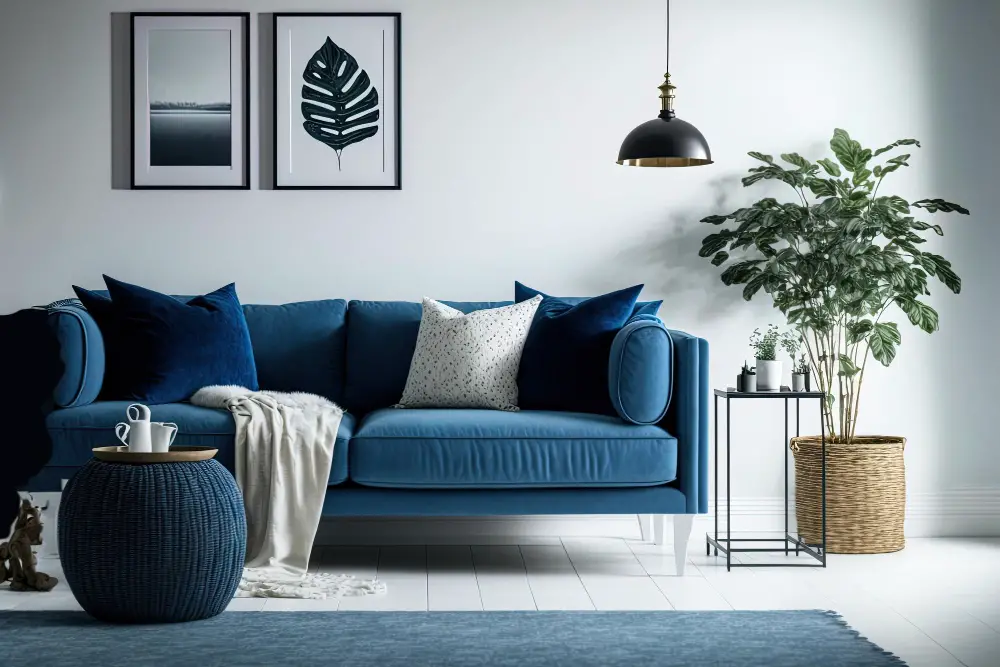
You don’t want to risk damaging your artwork or injuring yourself or others by using improper hanging techniques. To ensure that your pictures are securely hung, use appropriate hardware and follow the manufacturer’s instructions carefully.
One of the most important things to consider when hanging pictures is the weight of each piece. Heavier frames will require stronger hardware than lighter ones, so make sure you choose hangers and hooks that can support the weight of your artwork.
Another key factor in safe picture hanging is proper placement on the wall. Avoid placing heavy items directly over seating areas where they could fall and cause injury if they were to come loose from their mounting hardware.
It’s essential to check regularly for any signs of wear or damage in both your picture frames and their mounting equipment. If you notice anything amiss with either one, take steps immediately to repair or replace them before an accident occurs.
Alignment and Spacing

Proper alignment ensures that all of the pictures are level with each other, while proper spacing creates a balanced and visually appealing display.
To achieve proper alignment, use a level tool to ensure that each picture is straight. This will create a cohesive look that draws the eye in and makes your living room feel more put together.
Spacing is equally important when it comes to creating an attractive display. You want enough space between each picture so they don’t appear cluttered or overwhelming but not too much space where they seem disconnected from one another.
A good rule of thumb for spacing is 2-3 inches between frames horizontally and vertically. However, this can vary depending on frame size and arrangement style.
When arranging multiple frames above a couch or sectional sofa, try using templates made out of paper cutouts first before committing to any nail holes in the wall. Templates allow you to experiment with different arrangements without damaging walls unnecessarily until you find what works best for your specific decor style.
Adjustments and Maintenance

Over time, frames can shift or become crooked due to natural wear and tear or accidental bumps. To keep your display looking its best, be sure to check on it periodically and make any necessary adjustments.
If you notice that a picture has shifted out of alignment with the others or is no longer level, take a moment to straighten it out. You may also need to adjust the height of one or more pictures if they appear too high or low compared with the rest of your decor.
In addition to making adjustments as needed, regular maintenance can help keep your picture display looking fresh and vibrant over time. Dusting frames regularly will prevent buildup that can dull their appearance while also keeping them free from scratches caused by dust particles.
Gallery Wall Tips
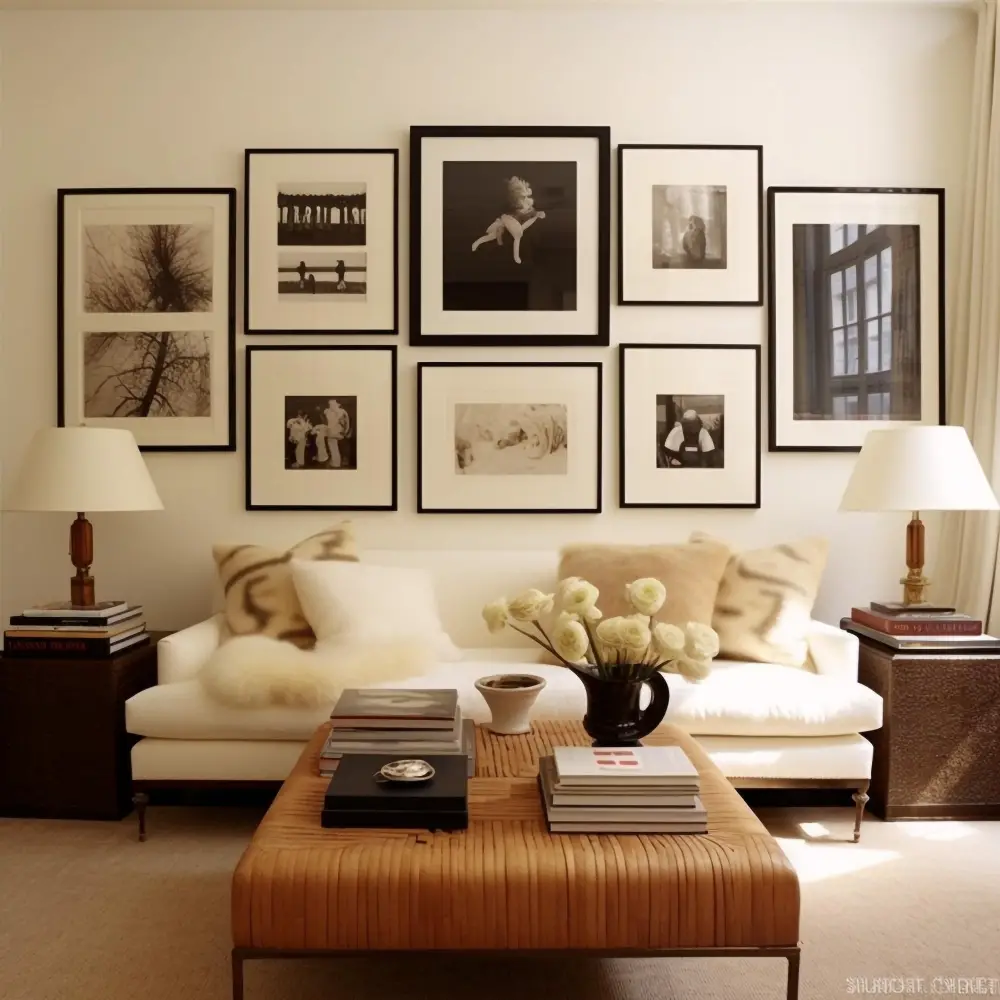
A gallery wall is essentially a collection of pictures or artwork arranged together on one wall. This can be an excellent way to showcase your personal style and add some visual interest to the space.
When creating a gallery wall, it’s essential to plan out the arrangement beforehand. You don’t want it to look cluttered or disorganized, so take some time to think about how you want everything laid out before starting.
One popular approach is using frames of different sizes and shapes for added variety. Another option is sticking with uniform frames but varying the picture sizes within them.
It’s also important not just only focus on hanging pictures at eye level; instead, try experimenting with different heights and angles for added depth and dimensionality.
Positioning Pictures Above Wainscoting
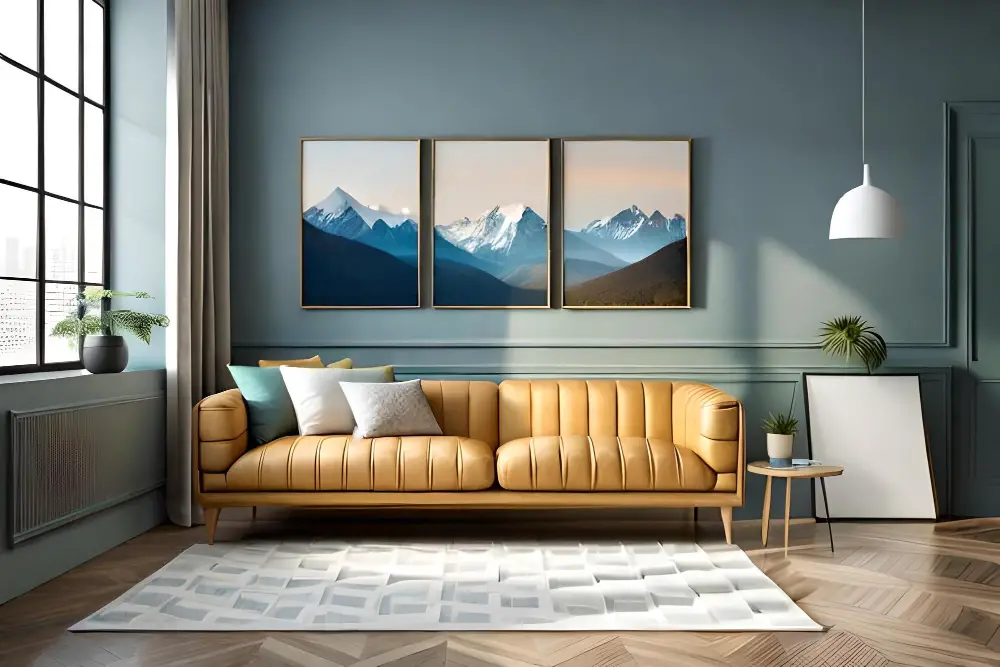
It can also present some challenges when it comes to hanging pictures above it. If you have wainscoting in your living room, dining room or hallway, you may be wondering how high above the paneling to hang your artwork.
When positioning pictures above wainscoting, there are a few things to keep in mind. First of all, consider the height of the wainscot itself – if it’s particularly tall or low-slung on the wall will affect where you should place your art pieces.
As a general rule of thumb for picture hanging over wainscotting: aim for about 6-8 inches between each piece (if more than one) and ensure they’re centered with respect both horizontally as well as vertically within their respective spaces so that they don’t look out-of-place relative either side by being too high up or down below eye-level.
Hanging Pictures or Mirrors Above a Sofa or Sectional
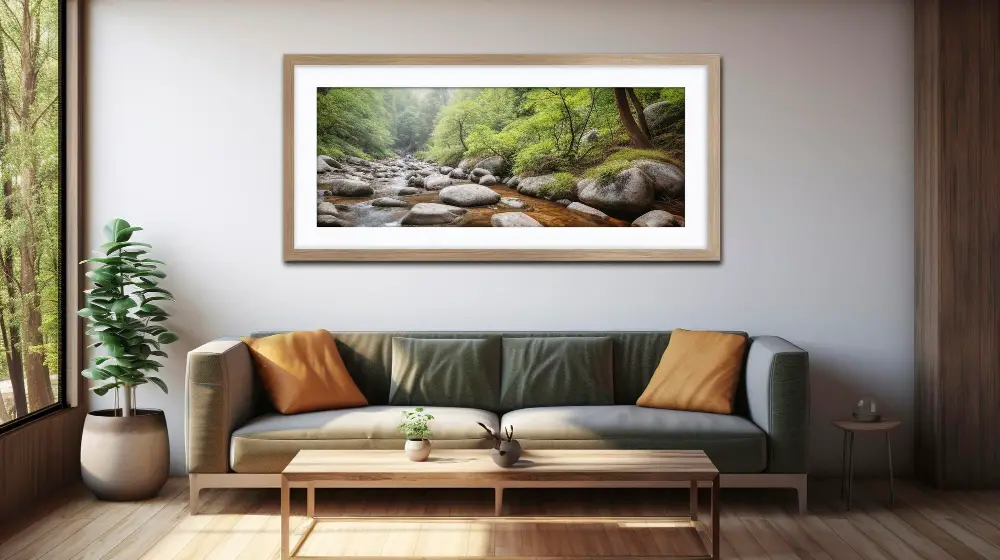
First and foremost, you want to make sure that the artwork is centered over the furniture piece. This will create a cohesive look and draw attention to your seating area.
Another important consideration is the size of your couch or sectional. If you have a large piece of furniture, you may want to opt for larger pieces of art or multiple smaller pieces arranged in an interesting pattern.
It’s also essential not only that your artwork complements but enhances other elements within the room such as color scheme and decor style.
Planning a Gallery Wall On an Empty Wall

Planning a gallery wall may seem daunting at first, but with some careful consideration and creativity, it can become one of the most eye-catching features in your home.
Start by selecting a theme or color scheme for your gallery wall. This will help guide you when choosing pictures and frames that complement each other.
You could choose black-and-white photographs for a classic look or mix different colors and textures for something more eclectic.
Next, consider the layout of your pictures on the empty wall above your couch. A symmetrical arrangement is always pleasing to the eye but don’t be afraid to experiment with asymmetry if that’s what suits you best.
Gallery Wall Placement Above Furniture
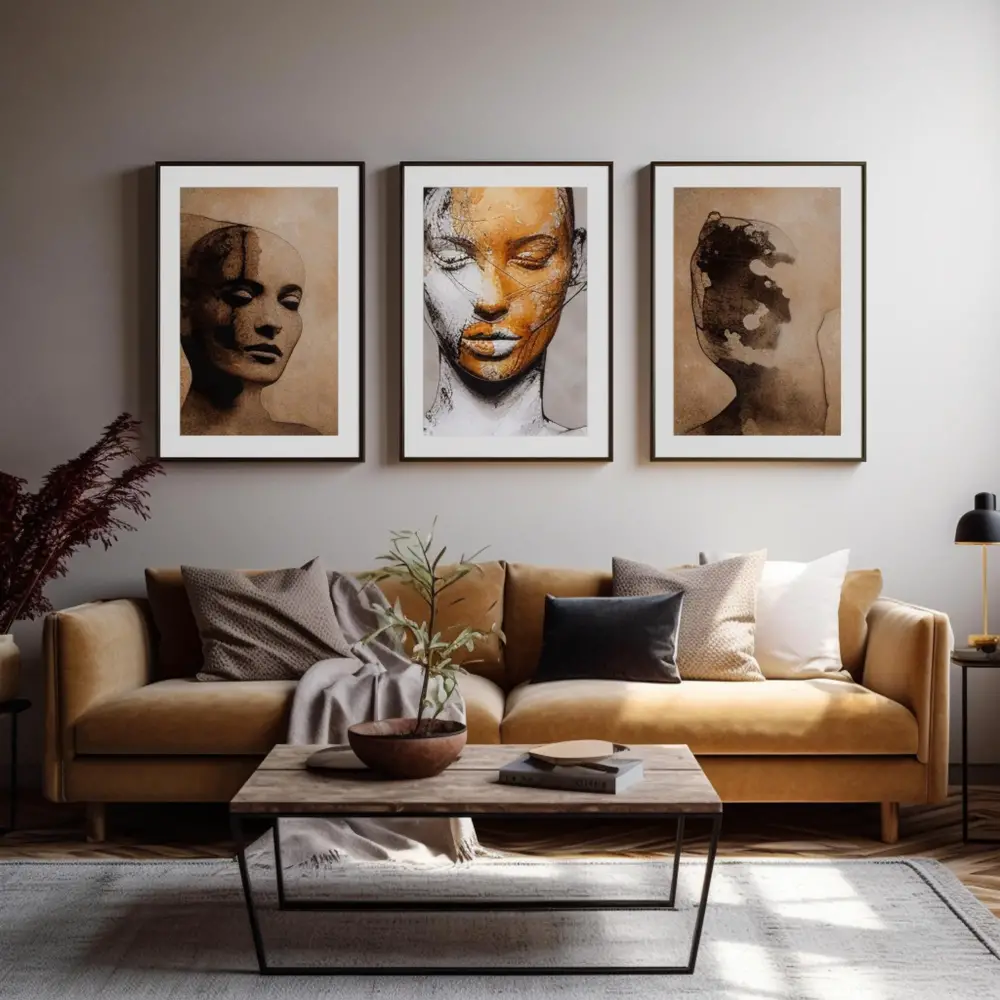
First and foremost, you want to make sure that the pictures are centered above the furniture piece. This means measuring both the width of your couch and the width of your picture arrangement so that they align perfectly.
Another important consideration is spacing between each frame or artwork. You don’t want them too close together or too far apart; aim for about two inches between each piece for optimal visual appeal.
If you’re planning on creating a gallery wall with multiple frames, consider using templates made from paper cutouts first before hammering any nails into walls. Templates will help ensure proper placement without damaging walls unnecessarily.
Lastly, think about how high up on the wall you’d like your gallery wall placed – typically around 6-8 inches above eye level is ideal but this can vary depending on ceiling height and other factors such as lighting fixtures or windows nearby which may affect visibility levels at different times throughout day/night cycles!
Room-specific Picture Hanging Tips
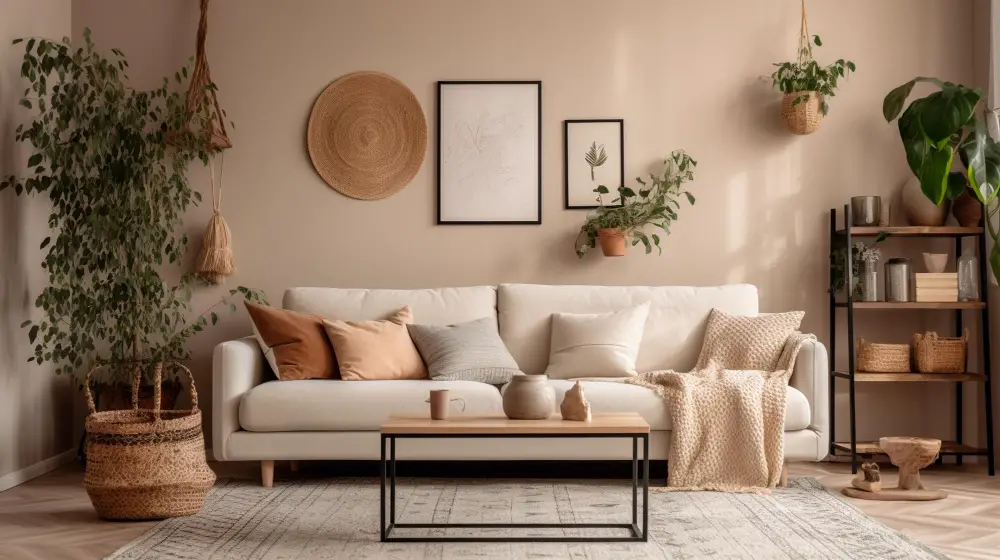
For example, if you have a low ceiling or a small living room, consider hanging your pictures slightly lower than eye level to create the illusion of height and space. On the other hand, if you have high ceilings or a large living area with tall furniture pieces like bookcases or armoires nearby, hang your pictures higher up on the wall for balance.
Another important consideration is matching your picture frames to complement your couch style and overall decor theme. If you have a modern sofa with clean lines and minimalistic design features, opt for simple black frames without any embellishments.
Alternatively, if you have an antique-style sofa with ornate details and intricate carvings in woodwork or upholstery fabric patterns such as floral prints then choose vintage-inspired gold-toned frames.
By following these simple yet effective tips tailored specifically for different types of rooms in mind when hanging artwork over sofas will ensure that every piece looks its best while enhancing both form & function within any given space!
FAQ
How big should artwork be above a couch?
The ideal size for artwork above a couch should be approximately 1/2 to 2/3 of the width of the sofa, so for a standard 84-inch 3-seat sofa, aim for artwork measuring between 42 and 60 inches wide.
Do you center a picture over a couch or on the wall?
Center a picture over a couch, as it creates a more balanced effect and becomes a main focal point in the room.
How do you arrange pictures on a wall above a couch?
Arrange pictures on a wall above a couch by hanging the bottom of the artwork or frame 8-10 inches above the back of the sofa, ensuring it’s low enough to be enjoyed while sitting.
Where should I hang above my couch?
Hang your decor above the couch at eye level, approximately 4-6 inches above the back of the couch and around 60 inches from the center of the pieces to the floor, to draw the eye up.
What is the ideal distance between multiple pieces of artwork hung above a couch?
The ideal distance between multiple pieces of artwork hung above a couch is approximately 2 to 5 inches apart.
How do you choose the best style and color of artwork to complement your couch and overall room design?
To choose the best style and color of artwork that complements your couch and overall room design, consider the room’s color scheme, design style, and the couch’s color and material while selecting a piece with cohesive elements.
Are there any specific framing styles or materials recommended for pictures hung above a couch?
Recommended framing styles and materials for pictures hung above a couch include those that complement the room’s decor, such as matching colors and materials.

